Lady was turning 66K miles and I thought it was past due for a tune-up. The spark plugs had been changed at the 40K mile mark but the ignition wires were the original thing. The throttle body needed a bit of cleaning and the rotor and rotor cap was due for replacement too.
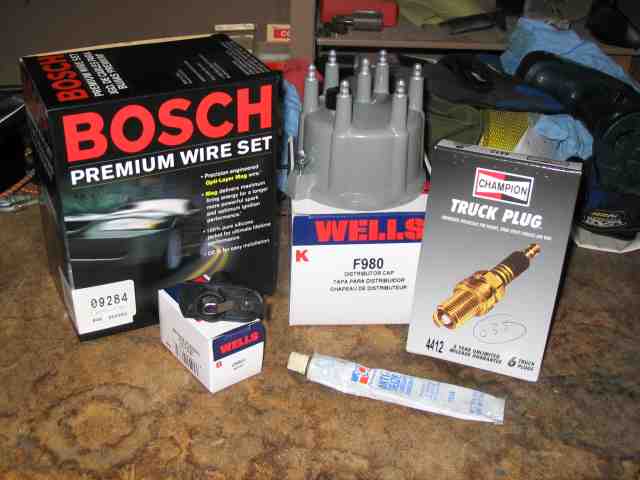
A quick trip to the local AutoZone parts store yielded everything I needed. I picked up some Bosch premium silicone wires (lifetime warrantee), a Wells distributor cap and rotor, and some 4412 Champion Truck Plugs. The wires were $35, the rotor and cap were $15, and the plugs were $17. I had a tube of anti-seize sitting on the shelf so there was no need to get more.
I won’t go into detail here in regards to replacing the spark plugs. A complete how-to for replacing your spark plugs already exists on the site. Please refer to it for instructions on doing the plugs. Even though I was going to be replacing the spark plug wires, I still put the spark plug boots back on each spark plug as the plug was replaced (you don’t have to push the boots on very hard).
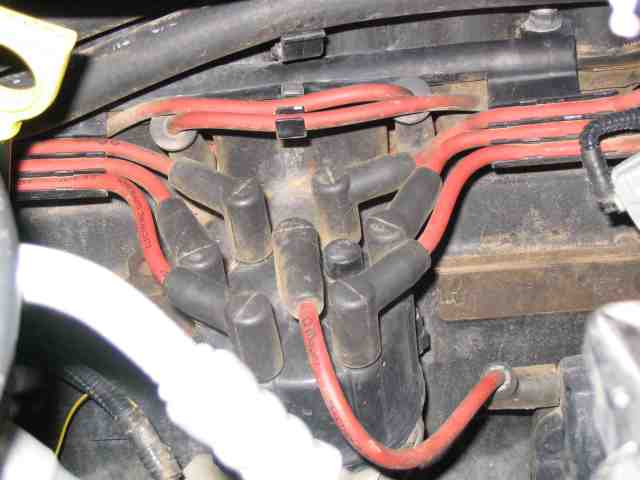
With new plugs installed, it was time to install the new ignition wires. The pic above shows the factory wires in place. The last thing you want to do is rip the wires off of the distributor cap and plugs UNLESS you have a photographic memory (or you take a couple of pics with your camera)…..or someone was nice enough to provide a diagram of the firing order.
Remove the ignition wire that runs from the center terminal of the distributor cap and goes to the ignition coil.
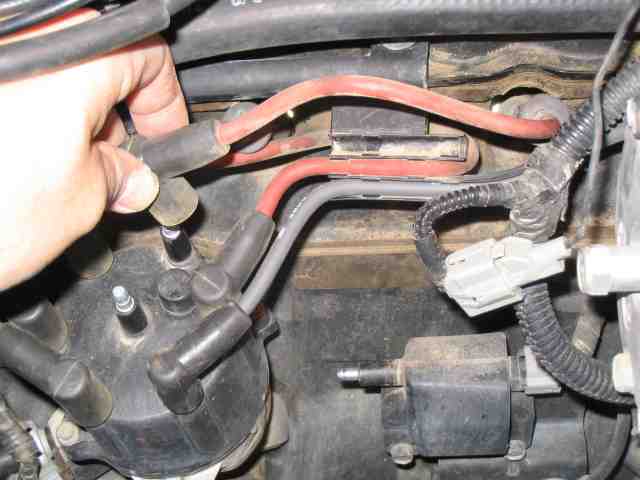
One by one, I removed an old wire (orange) and replaced them with the new wire (gray). The ignition wires come in various lengths with a couple of different connector boots on them. As you remove an original wire, make a mental note of the path it takes going from the distributor cap to the spark plug. With the old wire in hand, find a match for it (length and connector boot) from the new set. Install the new wire on the distributor cap and route it to the spark plug following the path used by the old wire. Take your time, there’s no hurry. Don’t forget to install the new ignition wire that connects the ignition coil to the center terminal of the distributor cap.
When you are done, the new wires will be nicely routed and will look as good as the factory wires once did.
Engine Tune-up
Two screws hold the distributor cap to the distributor. I grabbed a Phillips screwdriver and loosened both of the screws. Rock the distributor cap back and forth if it is stuck. Once the cap is loose, lift it off of the distributor.
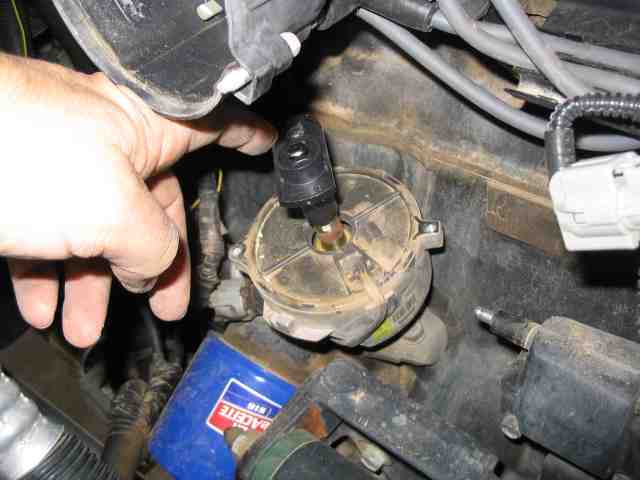
With the distributor cap off and out of the way, I removed the rotor from the shaft. It is just a friction fit. I lifted it straight up. At that point, the new rotor was installed onto the shaft. Note that the shaft is slotted and the rotor will only fit on it in one position.
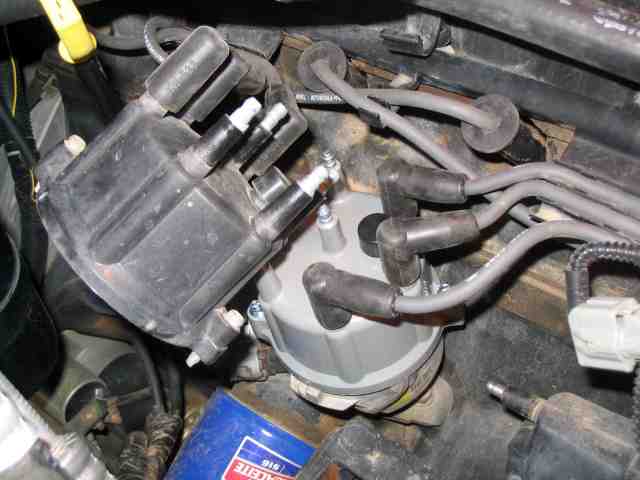
Next, the new distributor cap was put onto the distributor. When it is aligned properly, one can feel it slip into position and the two screws will be lined up correctly. The screws were then tightened.
One by one, I transferred the new wires from the old cap to the new cap. Doing just one wire at a time will ensure that one does not accidentally position the wires on the wrong terminal.
Don’t forget to install the new ignition wire that connects the center terminal of the distributor cap to the ignition coil.
Well, that is it for the ignition system. You now have new spark plugs, ignition wires, and a good rotor and distributor cap. You should be good to go for a while.
Engine Tune-up
Another item that requires some attention during an engine tune up is the fuel injector system. The fuel injectors can be routinely cleaned by adding fuel injector cleaner to the gas tank. Some folks do this on a periodic basis (every X thousand miles) while others rely on certain brands of gasoline that claim to keep your fuel system clean. Since I do not frequent the gas stations that have the cleaning agent in the gas, I rely on pouring a bottle of fuel injector cleaner into the gas tank. I’m not sure that one brand is better or worse than any other. I normally use a name brand and follow the instructions on the container. It will indicate the amount of cleaner to add to your tank for a “tune-up” cleaning and usually for routine maintenance. Again, just follow the provided instructions and all should go well.
Last on my list of the things to do was to clean the throttle body. It had been some time since this was last done and I knew I was over due for a cleaning.
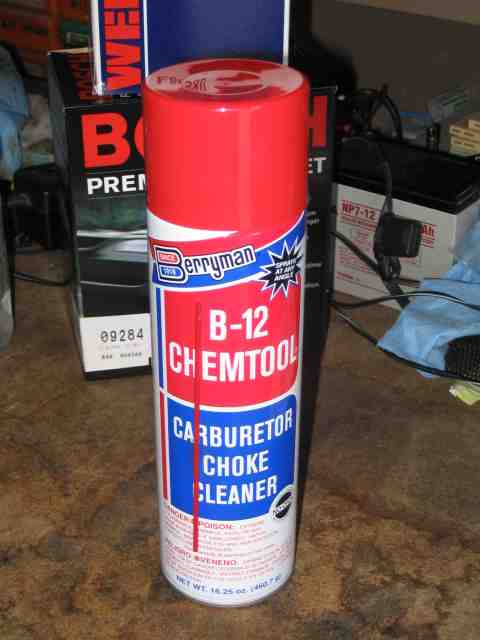 I couldn’t find the product I was looking for so I opted for the old reliable carb cleaner. I checked the directions and made sure the product was safe for vehicles with O2 sensors. It was.
I couldn’t find the product I was looking for so I opted for the old reliable carb cleaner. I checked the directions and made sure the product was safe for vehicles with O2 sensors. It was.
The air tube had to be removed from the top of the throttle body. It is easy to do as it is only held on with a hose clamp. I loosened the clamp, pulled the vent hose from the side of the air tube (it goes to the valve cover), and then lifted the air tube off of the throttle body.
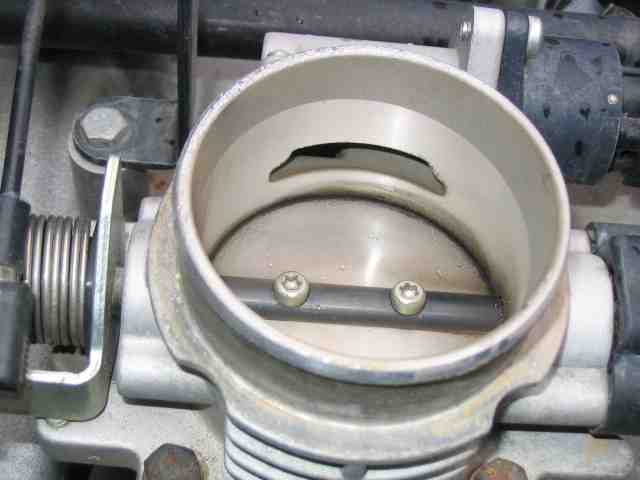 A look down into the throttle body revealed some residue but honestly, it was not as bad as I was expecting.
A look down into the throttle body revealed some residue but honestly, it was not as bad as I was expecting.
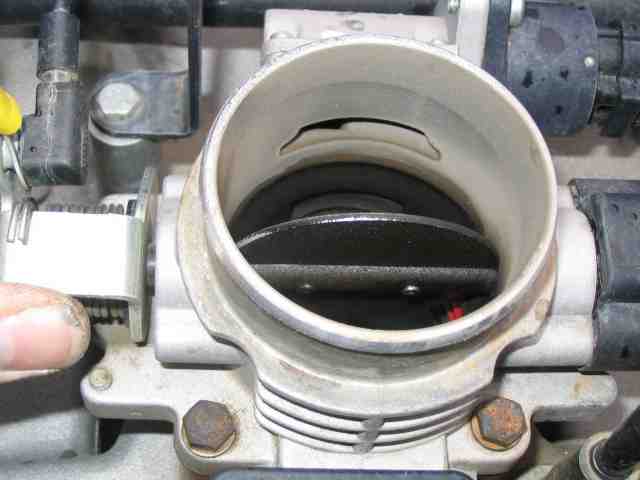
Then I opened the throttle (where the throttle cable connects) and found a lot more of what I was expecting to see. Nasty!
The directions for this brand of cleaner recommends you run the engine at a high idle and apply short bursts (3~5 seconds) of cleaner to the throttle body. This stuff caused the engine to bog down so it was necessary to keep a bit of throttle action going so the engine would continue to run. When I decided that enough was enough, I turned off the engine and opened the throttle again. It wasn’t perfect but it was a lot better than when I had started. I’ll run it for a bit and then give it another cleaning when I do the next engine oil change.
That brings my version of an engine tune-up to a close. I didn’t change the air filter as I had done that just a few months back and it was not all that dirty. If it has been a while since you last changed yours, now would be an excellent time to drop in a fresh one.
Don’t be afraid to roll up your sleeves and work on your Jeep. As I’ve found over the years, it is usually not as hard as I thought it would be and in doing it myself, I’ve saved a LOT of money…..and I have a much better performing vehicle as the result of it. You can too!
